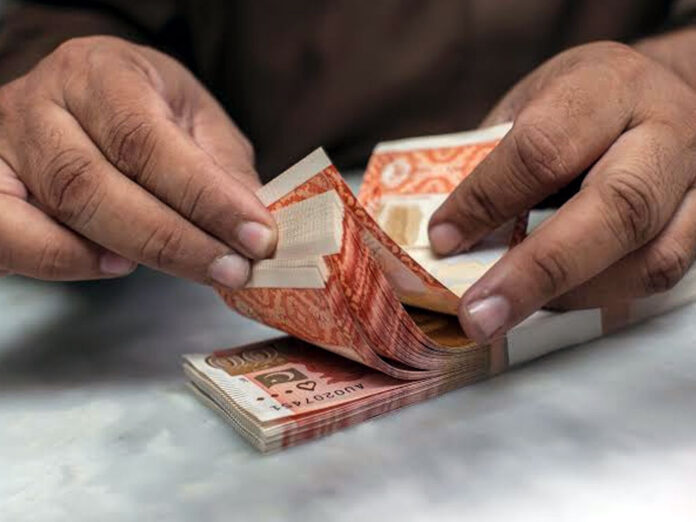The Pakistani rupee fell to a new all-time low of 172.78 against the US dollar on Monday, breaching Thursday’s low of 171.13, amid uncertainty regarding resumption of the International Monetary Fund’s (IMF) $6 billion Extended Fund Facility (EFF).
According to the State Bank of Pakistan (SBP), the rupee shed Rs1.60 (-0.93 percent) as the US dollar opened at Rs171.18 and closed at Rs172.78.
During intra-day trading in the inter-bank market, the rupee plummeted by a staggering Rs2.02 (-1.2 percent) against the US dollar to a record low of Rs173.2; however, it recovered some loss before the close of the session. Within the open market, the rupee was traded at Rs172/173 per dollar.
The local currency had closed at Rs171.18 on Friday, according to the data from the State Bank of Pakistan (SBP).
According to a report by Mettis Global, strong demand for the greenback as well as rising prices of crude oil in international markets were behind the latest round of erosion in the rupee’s value.
The report further said that additional pressure on the rupee was created due to no timeframe determined for the conclusion of the ongoing negotiations between the government and the International Monetary Fund that has led to a delay in the release of the next tranche from the Fund.
Currency experts state that clarity on the talks will stabilise rupee. However, the mentioned that another reason for rupee depreciation was that the market opened after two weekly holidays and Tuesday is also a public holiday on account of Eid Milad-un-Nabi.
Last week, speaking at the launch of the Kisan Portal, Prime Minister Imran Khan had said that the pressure on the Pakistani rupee is temporary and will be over soon.
Media reports claim that Prime Minister Imran Khan is having a meeting on inflation and the economic situation in the country and is expected to make an important announcement regarding public relief in this meeting.
It is pertinent to mention here that Fitch Ratings in September had revised down its forecasts for the Pakistani rupee for both this year and next due to a variety of factors including an increased flow of US dollars into neighbouring Afghanistan.
For 2022, Fitch expects an average rate of 180 versus a previous forecast of 165.
“Our expectation for the currency to weaken further is based on Pakistan’s worsening terms of trade, tighter U.S. monetary policy, alongside the flow of US dollars out of Pakistan and into Afghanistan,” it said.




